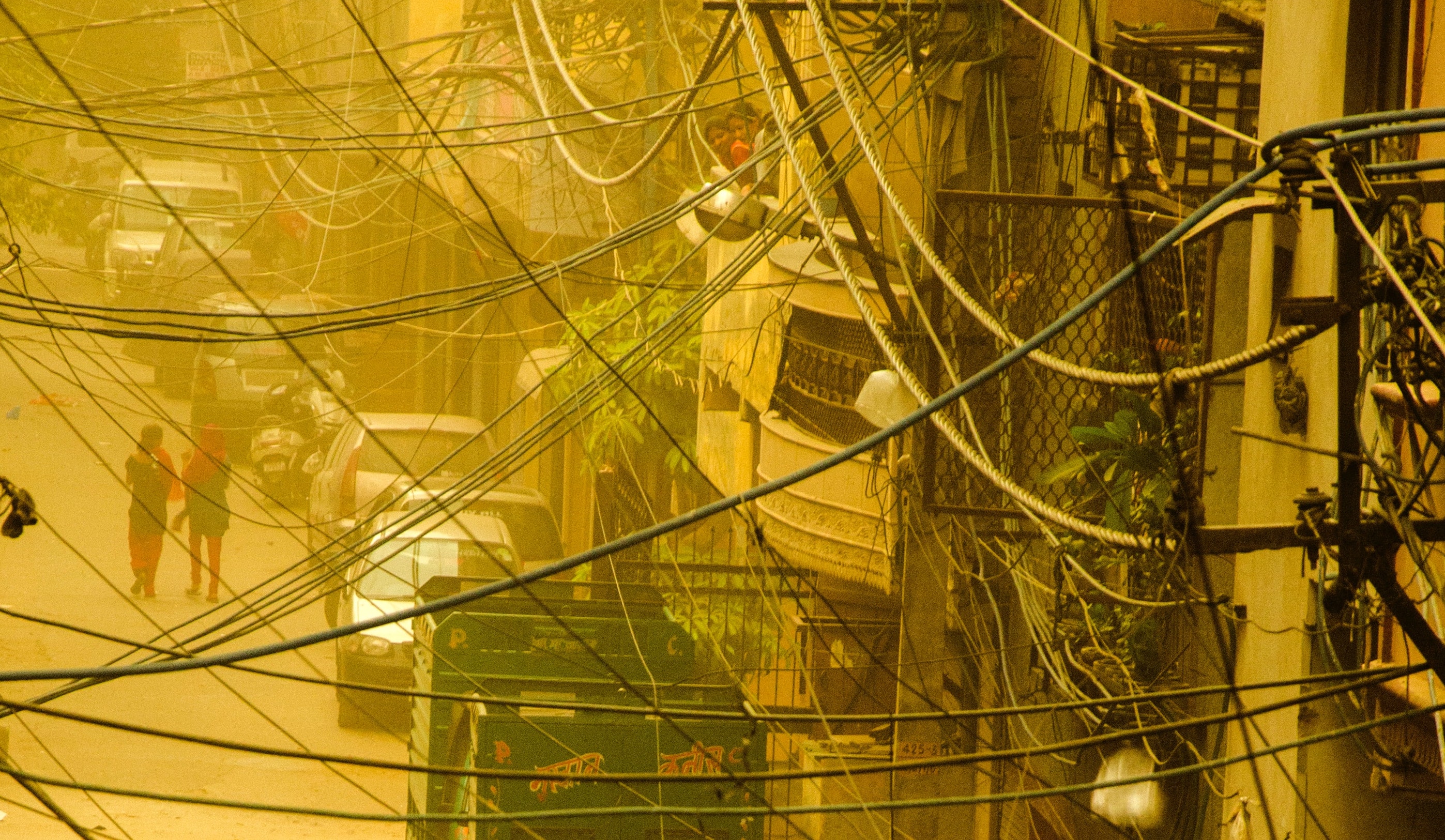Ecological Grief: Mourning a Distant Cultural Home

Vivek Gill, BHSc Candidate, School of Health Studies
November 18, 2021
I was just six years old when I first remember being aware that our environment was in danger. Waking up after a 20-hour journey to Delhi, India, I blew my nose and found my tissue covered with flecks of black soot. Horrified and unsure of why this had happened, I rushed to my mother for an explanation. Each time I have returned to Delhi and other urban centers in India since, the sky appears increasingly obscured by smog (a smoky fog consisting of pollutants, particulates, and ozone that hangs ominously overhead) and relatives seem to complain more about the air around them, irritating their eyes, lungs, and heads. On my last few trips to India, I have experienced the impacts of environmental destruction firsthand, although admittedly, in a manner not nearly as severe as those who must dwell long-term among such pollution. Each visit introduces a troubling new normal, from spending hours on tarmacs hoping that the smoggy haze will dissipate enough to fly a plane, running for shelter as a downpour of acid rain falls from above, or trying to walk along beaches strewn with so much washed-up garbage that one can barely see the sand. My mother complains that microscopic flecks of ash in the air prevent her from wearing contact lenses. My sisters wake up coughing and congested.
My family immigrated from India to Canada 55 years ago. Thus, my connection to India is through my family, my culture, and countless memories of childhood visits, making many parts of it precious to me—sacred, even. Having listened to my grandparents’ childhood stories and accounts of living among narrow streets in the bustling markets of Old Delhi, it strikes me that I have never and will never be able to truly see the home they remember. To make matters worse, the home which I have the privilege of visiting now seems to be increasingly destroyed each time I return, obscuring my sense of connectedness to it. I also fear for my relatives still living there who are chronically exposed to toxic pollutants, affecting all aspects of their lives.
India is the third largest emitter of carbon in the world, causing heat waves, sea level rises, glacial retreat, flooding, landslides, droughts, and agricultural disruption (“Climate of India,” 2004). Particularly, many aspects of India’s rich cultural heritage, which connect people to the land, are being threatened by environmental ruin. The Taj Mahal, a symbol of India worldwide which my grandfather remembers as gleaming white, is being turned yellow and green by acid rain and tremendous air pollution (Bengali, 2018). The nearby Yamuna River, one of the most sacred waterways in the nation, has become grossly polluted, attracting creatures whose wastes stain and erode the monument’s 390-year-old marble (Bengali, 2018). The degradation of India’s most visible monument is the mere tip of the iceberg of the environmental destruction seen across the nation and is a powerful metaphor for the resulting decay of culture and erosion of connectedness. In the face of such loss, I cannot help but feel that I am losing my cultural home.
Ecological grief, a sense of mourning felt in response to environmental ruination, is a widely experienced phenomenon. I resonate with the closely related concept of ‘solastalgia,’ which refers to “pain associated with the loss of precious places, especially with environmental change and degradation” (Wardell, 2020). However, most examinations of ecological grief and solastalgia centre around the experiences of those who live within the environments they are mourning. Such a focus may overlook the affective experiences of immigrants and refugees who, having left their homes, mourn its destruction to climate change. This can even be extended to encompass my experience, as someone grieving for a cultural home experiencing environmental destruction, despite never having lived there. Such an expanded view reflects the global, yet personal nature of ecological grief. As Wardell (2020) notes, “what is at stake… is no longer just the local” (p. 194)—geographically distant instances of environmental erosion can create grief just as palpable as if such destruction was experienced proximally. I mourn the loss of the present and the future as I watch the destruction of my cultural home from afar. Given that climate change is a threat to culture and the personally sacred, discourses on the impacts of climate change must expand to account for ecological grief among those near and far from places undergoing ecological destruction.
Sources
Bengali, S. (2018, 28 May). Global Development: How air pollution, a dying river and swarms of defecating insects threaten the Taj Mahal. Los Angeles Times. https://www.latimes.com/world/asia/la-fg-india-taj-mahal-20180522-story.html
Climate of India. (2004, June 8). In Wikipedia. https://en.wikipedia.org/wiki/Climate_of_India
Wardell, S. (2020). Naming and framing ecological distress. Medicine Anthropology Theory, 7(2), 187–201. https://doi.org/10.17157/mat.7.2.768
Photo by Bibhu Behera on Unsplash
